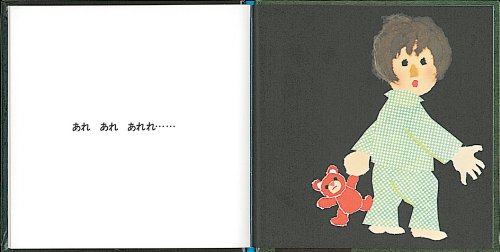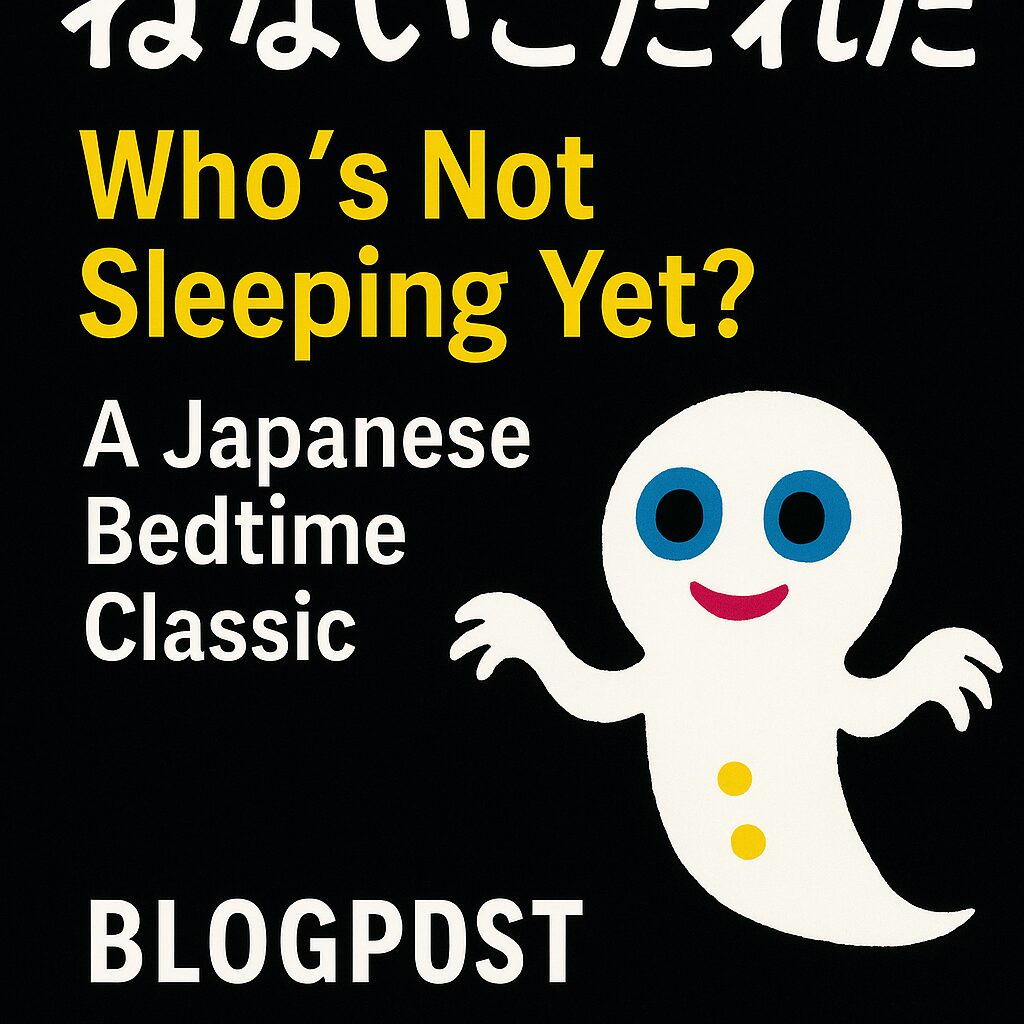- 1. Introduction: More Than Just a Bedtime Book
- 2. Book Overview
- 3. What’s the Story About?
- 4. The Power of Visual Simplicity
- 5. Cultural Insight: Scary but Safe
- 6. Why Is This Book So Popular in Japan?
- 7. The Science of Bedtime Reading
- 8. Why Western Parents Love It Too
- 9. Tips for Reading It Aloud
- 10. Where to Buy
- 11. Final Thoughts: Not Just for Scaring — but Caring
1. Introduction: More Than Just a Bedtime Book
For many parents, the bedtime routine is one of the most important — and sometimes, most challenging — parts of the day. What if a picture book could not only help children wind down but also teach them valuable emotional lessons through striking artwork and a hauntingly memorable story?
Enter “ねないこだれだ” (Neh-na-i-ko Da-re Da) — translated loosely as “Who’s Not Sleeping Yet?” — a beloved Japanese children’s book written and illustrated by Keiko Sena. With over 50 years of cultural impact and millions of copies sold in Japan, this short but unforgettable picture book has become a rite of passage for Japanese toddlers and preschoolers.
But what makes it so special, and why are more and more non-Japanese parents recommending it to their children?

2. Book Overview
- Japanese Title: ねないこだれだ
- Romaji (Phonetic): Nenai ko dare da
- English Translation: Who’s Not Sleeping Yet?
- Author/Illustrator: Keiko Sena
- Published: 1969
- Publisher: 福音館書店 (Fukuinkan Shoten)
- Language: Japanese
- Length: 24 pages
- Recommended Ages: 2–5 years
📘 Purchase Link: Buy “ねないこだれだ” on Amazon Japan
3. What’s the Story About?
At first glance, Who’s Not Sleeping Yet? seems like a simple tale. The book opens by warning that children who stay up too late, when all good kids are already asleep, might get a visit from a ghost.
As the pages turn, the book’s tone becomes darker — yet still playful. A mischievous ghost appears, taking the unsleeping child away into the sky. The story ends abruptly, leaving a powerful, lingering impression.
There’s no detailed backstory or happy resolution — and that’s exactly why this book works so well. Its minimal text and bold, expressive artwork capture a child’s imagination in a way that many Western picture books shy away from.
4. The Power of Visual Simplicity
Keiko Sena’s art style is immediately recognizable: black backgrounds, white figures, and bright primary accents. The ghost is drawn in a soft, almost fluffy way — not grotesque or terrifying — making it visually engaging rather than nightmarish.
The simplicity of the illustrations allows children to focus on the message and atmosphere, not on intricate visual details. This visual economy is a hallmark of classic Japanese children’s literature.
5. Cultural Insight: Scary but Safe
Japanese children’s stories often balance light fear with emotional lessons. “ねないこだれだ” introduces a mild spooky element, but it’s always controlled, never gratuitous. This type of storytelling is rooted in the Japanese tradition of using “obake” (ghosts or spirits) to guide behavior in a gentle yet effective way.
Rather than shielding children from fear, the book helps them face it — in manageable doses — and reflect on their own habits.
6. Why Is This Book So Popular in Japan?
- Over 4 million copies sold since 1969
- Commonly found in Japanese nurseries and kindergartens
- Part of the legendary “Gakushū Ehon” (Learning Picture Book) series
- Appeared in Japanese pop culture, parodies, and TV references
This book is so culturally iconic that even adults in Japan remember being slightly spooked by it — and yet, they smile fondly when recalling it.

7. The Science of Bedtime Reading
Beyond cultural interest, bedtime stories serve a vital role in child development:
- Improved Language Skills: The repetitive and rhythmic language used in books like “ねないこだれだ” helps children recognize patterns in speech and vocabulary.
- Emotional Intelligence: The story introduces feelings like fear, curiosity, and consequence — all within a safe, comforting context.
- Routine and Regulation: Regular bedtime reading helps signal to a child’s brain that it’s time to wind down, making sleep come more easily.
Even in Western sleep studies, consistency and calming activities like reading are proven to reduce bedtime resistance and promote better sleep hygiene.
8. Why Western Parents Love It Too
While the book is entirely in Japanese, many bilingual families — or those exploring foreign language learning — find it to be a great introduction to Japanese culture and hiragana characters.
Some parents even create their own simple translations while reading aloud, such as:
“Who’s still awake?
It’s already past bedtime.
Children who stay up too late…
might be taken by a ghost!”
Others enjoy letting the visuals speak for themselves, using the pictures to engage their child in questions and imagination-driven dialogue.
9. Tips for Reading It Aloud
Even if you don’t speak Japanese fluently, here are a few ways to enjoy “ねないこだれだ” with your child:
- Tone and Sound Effects: Use your voice to mimic the ghost’s soft “wooooo” and build a suspenseful tone.
- Point to Illustrations: Ask your child, “What do you think is happening here?”
- Make It a Ritual: Save the book for the last read of the night to signal that it’s time for lights out.
10. Where to Buy
This book is widely available in Japan, and you can order it internationally via Amazon Japan. While the book is only in Japanese, many overseas buyers have left glowing reviews:
📘 Buy “ねないこだれだ” on Amazon Japan
Tip: Amazon Japan allows shipping to many international locations, including the United States. You can use browser-based translation tools or set up an Amazon Japan account in English.
11. Final Thoughts: Not Just for Scaring — but Caring
At its core, Who’s Not Sleeping Yet? isn’t about frightening children. It’s about acknowledging emotions, setting boundaries, and doing so through bold art and rhythmically sparse text.
For children, it presents a surprising, memorable moment before bed. For adults, it’s a glimpse into Japanese storytelling tradition — minimalist, thoughtful, and unafraid to be a little weird.
If you’re building a multicultural bookshelf for your child, this book is a must-have.



comment Please enter a comment.